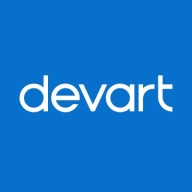

Oracle Data Integrator and Python Connectors are competing products in the data integration category. Oracle Data Integrator holds the upper hand with its extensive integration capabilities, while Python Connectors offer more adaptability and flexibility for data management tasks.
Features: Oracle Data Integrator provides robust integration processes, extensive data transformation, and advanced workflow management. Python Connectors offer superior flexibility, powerful scripting capabilities, and seamless integration with numerous databases.
Ease of Deployment and Customer Service: Oracle Data Integrator’s deployment process is detailed and supported by extensive documentation, with responsive customer support. Python Connectors are simpler to deploy, leveraging existing environments and community resources for support.
Pricing and ROI: Oracle Data Integrator involves higher setup costs but delivers substantial ROI through deep integration capabilities and scalability for large enterprises. Python Connectors, with minimal setup costs, are cost-effective for smaller projects seeking rapid deployment with high flexibility.

| Company Size | Count |
|---|---|
| Small Business | 25 |
| Midsize Enterprise | 12 |
| Large Enterprise | 43 |
Oracle Data Integrator (ODI) is a data integration software solution that provides a unified infrastructure to streamline data and application integration projects. It uses a powerful design approach to data integration, which separates the declarative rules from the implementation details. The solution is based on a unique ELT (Extract Load Transform) architecture, eliminating the need for a standalone ETL server and proprietary engine.
Oracle Data Integrator Features
ODI has many valuable key features. Some of the most useful ones include:
Oracle Data Integrator Benefits
There are many benefits to implementing ODI. Some of the biggest advantages the solution offers include:
Reviews from Real Users
Below are some reviews and helpful feedback written by PeerSpot users currently using the Oracle Data Integrator (ODI) solution.
Brian D., Business Process and Strategy Specialist Advisor at NTTData, says, “The Knowledge Module (KM) is my favorite feature of ODI. This is where I learned how to use variables to make jobs dynamic. I took that knowledge and created a KM that would go into iTunes and pull the sales of eBooks. Making something that is reusable, like a KM, is important to not only reduce build time but also maintenance in the future.”
Ashok S., Applications Support Manager at a marketing services firm, mentions, "The most valuable features of ODI are the ease of development, you can have a template, and you can onboard transfer very quickly. There's a lot of knowledge modules available that we can use. If you want to connect, for example, a Sibyl, SQL, Oracle, or different products, we don't have to develop them from scratch. They are available, but if it's not, we can go into the marketplace and see if there's a connector there. Having the connector available reduces the amount of hard work needed. We only have to put the inputs and outputs. In some of the products, we use there is already integration available for ODI, which is helpful."
Python Connectors enable seamless data connectivity between Python applications and external data sources, enhancing integration efficiency for development projects.
Python Connectors streamline the process of integrating Python applications with databases, APIs, and other data platforms. They support diverse data sources and protocols, ensuring robust data exchange and manipulation. By handling complex data interactions, Python Connectors empower developers to focus on application logic and innovation, resulting in time-effective project execution.
What are the essential features of Python Connectors?In industries like finance and healthcare, Python Connectors simplify data integration, allowing institutions to manage massive datasets effectively and maintain compliance standards. In e-commerce, they enable real-time inventory updates and customer data analysis, enhancing business agility and customer satisfaction.
We monitor all Data Integration reviews to prevent fraudulent reviews and keep review quality high. We do not post reviews by company employees or direct competitors. We validate each review for authenticity via cross-reference with LinkedIn, and personal follow-up with the reviewer when necessary.